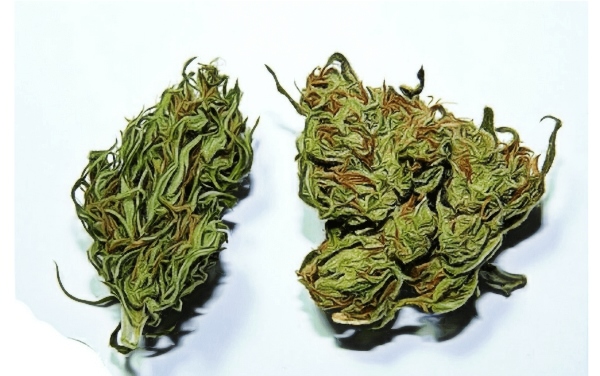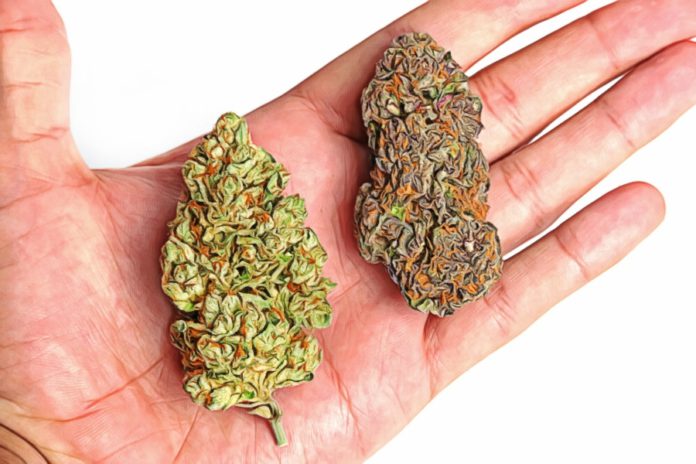Now that marijuana has been legal in numerous states, many are starting to reap its benefits and integrate them into their daily lives. However, the effects of cannabis are not a linear thing—there are factors that you should be familiar with before usage, such as the type of weed you’re about to smoke or take.
Marijuana refers to the dried stem, leaves, flowers, and seeds of the plant. Cannabis is defined by the way the plant is prepared and its variety. The two major types of weed of this species are cannabis Indica and cannabis Sativa, which provide different effects and highs.
Depending on the type of effect the person would like to have, they’ll consider these options to get the desired experience they want. Additionally, it’s good to consider the kind of administration or consumption to choose — smoking or eating — since it could also impact the effects of marijuana on the body.
With that being said, in this article, we’ll dig deeper into the difference between cannabis Sativa and cannabis Indica, providing you with an in-depth look at both its effects and potential risks you may experience.
What is Sativa? What is Indica?
Sativa
Cannabis sativa comes from warmer climates like South Africa and Mexico and often grows very tall with distinctive, thin leaves. In ideal lighting conditions, the weed may flower but still require darkness of 11 hours a day.
This type of marijuana has lower levels of THC and higher levels of CBD. With this, cannabis Sativa has an equal level of both types of chemicals. Because of this, you get a more energizing effect, allowing you to consume this type of strain in the morning and afternoon.
Cannabis Sativa is great if you want to improve your focus and creativity as it gives you a cognitive or “head high.” Because of its mood-lifting effects, this type of strain is often used by people dealing with exhaustion and depression and can also relieve those experiencing symptoms of ADHD and mood disorders.
Indica
On the other hand, cannabis Indica originated in the Hindu Kush region, which is pretty close to Afghanistan. Because the climate is much colder, its physical properties are much different than sativa, giving it a shorter appearance, much like a bush. As for the leaves, they’re much fuller and rounder, and their buds grow in clumps.
Unlike Sativa, cannabis Indica has more THC and lower levels of CBD, making it a much stronger weed. Because of this, it gives relaxing and sedative effects, making it a more laid-back choice. Because of this, people often consume Indica if they’re looking for a “body high” and want more restful nights.
Since it can make you have a restful sleep, people with insomnia often lean towards this strain since it helps relieve insomnia and pain symptoms because of the higher levels of THC it contains.
Hybrid
Because of the plethora of varieties of plants today, there’s no surprise that there’s a hybrid of both strains. Hybrid strains are created by cross germinating the seeds of both cannabis strains. This was done to provide consumers with both effects of indica and sativa. With that in mind, most strains today are grown as hybrids, and pure Indica and Sativa are much harder to find.
Hybrid strains will have a dominating effect. For example, if the hybrid is Sativa-dominant, it will most likely give you a cognitive high, and if the hybrid strain you’re consuming is Indica-dominant, then you’ll most likely experience a more “body high” effect.
Comparing Their Side Effects: How Long Can They Last?
Weed Potency of Cannabis Sativa
Since Sativa strains provide an energizing high, it’s a great choice to consume if you want to boost yourself in social situations and carry on conversations. It’s also a great choice if you want to focus on certain tasks, as it gives you a nice high that can help boost your productivity.
Most people who prefer Sativa strains would often smoke this during that day to get that smooth rush of head energy, but thankfully, it doesn’t give you the effects of feeling like you’re in a different dimension. For this reason, people describe the effects of Sativa as giving you a jolt of pure joy and energy.
With that said, the sativa strain has a higher THC level than indica, providing you with more positive effects. That’s why it comes with no surprise that people lean towards cannabis during the day.
Since Sativa acts like a stimulant and provides energy to the person, its effects can help alleviate nausea, chronic pain relief, and migraines.

Weed Potency of Cannabis Indica
Unlike the cannabis Sativa, you get a more relaxing effect when you take Indica strains. That’s why people who just want to kick it and relax at home and looking to get quicker sleep often consider smoking cannabis Indica.
Because it gives you a “body high” effect, people often describe this strain as “magical,” especially when consumed in the evening. This is because it gives you a very peaceful, deep, calm, and serene intoxication.
But of course, this will depend on what type of Indica strain you’re consuming because some will give you a relaxing hit, while others can pack a mean punch and really knock you out. This can result in the difference in THC levels. For pure form Indica, you’ll get higher CBD than THC, which is the complete opposite of the Sativa strain.
Although both strains have notable medical benefits, it’s good to consider the THC concentrations to see which works best since you’ll experience different effects. Since Indica leans towards a more soothing nature, it’s great for anxiety, chronic pain, insomnia, and muscle spasms.
Potential Side Effects and Risks
For safe consumption, it always pays to know the different side effects and risks you may experience from taking cannabis. Although the benefits outweigh the cons, here are the possible unwanted side effects that you might experience:
- Decreased blood pressure
- Dry mouth
- Increased heart rate
- Dry eyes
- Lethargy
- Dizziness
- Paranoia
- Anxiety
However, you should note that these side effects are often associated with the amount of THC the strain contains, not the CBD or other cannabinoids. Besides that, the method of how you consume the strain also matters.
Sources:
















